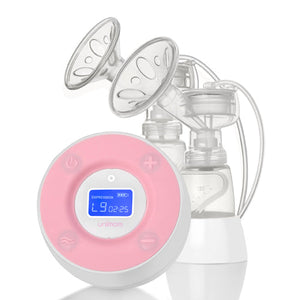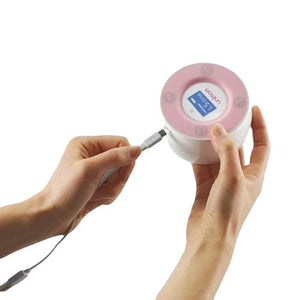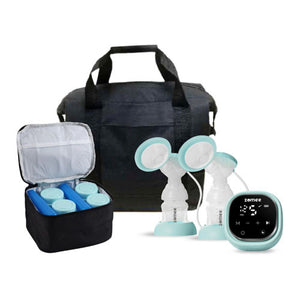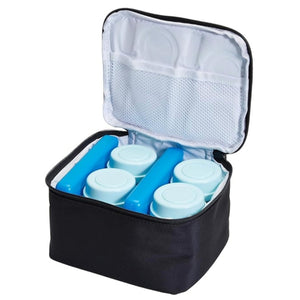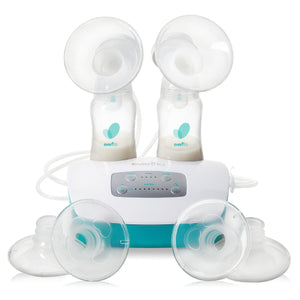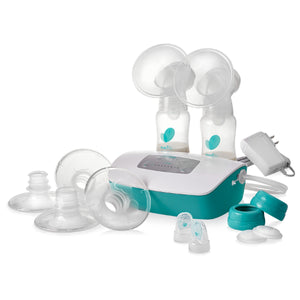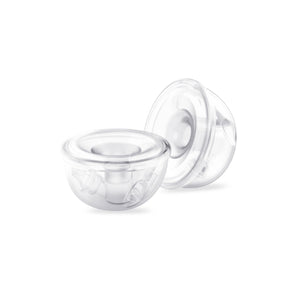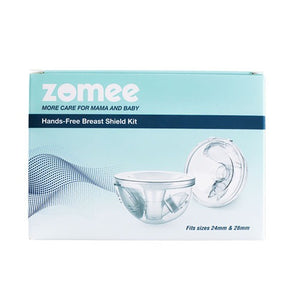Using a manual breast pump can be a convenient and budget-friendly way to express milk, especially for travel or occasional use. This guide outlines how to use it step by step, including hygiene tips, positioning, and how long to pump. It also compares manual vs. electric pumps and links to helpful Moovkart products.
Introduction: Empowering Your Breastfeeding Journey
Whether you're a first-time mom or simply exploring flexible pumping options, learning how to use a manual breast pump can be empowering. While electric pumps offer automation, manual breast pumps provide portability, control, and quiet operation.
At Moovkart, we support every mother’s unique breastfeeding needs. This guide helps you safely use a manual breast pump, avoid discomfort, and express milk efficiently—whether you're at home, at work, or on the move.
What Is a Manual Breast Pump and Why Choose It?
A manual breast pump is a handheld device that allows you to express milk using a handle or lever. It doesn’t require electricity or batteries, making it a go-to option for:
- Traveling mothers
- Occasional pumpers
- Emergency backup situations
- Quiet or discreet pumping
Compared to electric models, manual pumps are lighter, quieter, and more affordable. While they may take longer, they offer more control over suction and rhythm.
8 Safe & Simple Steps to Use a Manual Breast Pump
1. Clean Your Hands and Pump Parts
Before each session:
- Wash hands thoroughly with soap and water.
- Clean all pump parts with hot, soapy water and air dry.
- Sterilize parts if it's the first use or after storage.
Tip: Use Moovkart’s manual breast pump cleaning kit for safe, hassle-free hygiene.
2. Find a Comfortable, Private Space
You’ll get better results if you're relaxed. Sit upright in a chair, take a few deep breaths, and ensure the area is clean and calm.
3. Assemble the Pump
Follow the manufacturer’s instructions for assembly. Ensure the:
- Suction valve is properly inserted
- Flange (breast shield) is clean and dry
- Bottle is securely attached to catch milk
4. Position the Flange Correctly
Place the center of the flange over your nipple (not the areola). A good fit prevents pain and improves suction. Flanges that are too small or large can cause:
- Soreness
- Poor milk flow
- Friction or cracked nipples
5. Begin Pumping Gently
Start with short, light pumps to simulate your baby’s initial sucking reflex. Once milk starts flowing:
- Use long, steady compressions
- Find a rhythm that’s comfortable and effective
Aim for 15–20 minutes per session per breast, or until milk flow slows.
6. Switch Sides or Use Both Breasts Alternately
Most mothers pump one breast at a time with a manual pump. After 10–15 minutes, switch to the other side.
Alternate pumping helps:
- Stimulate more milk production
- Relieve engorgement
- Balance milk supply
7. Store the Milk Safely
Once you’ve finished:
- Pour milk into sterilized storage bags or bottles
- Label with date/time
- Store in the fridge (up to 4 days) or freezer (up to 6 months)
8. Clean and Dry the Pump Thoroughly
Disassemble the parts immediately after use:
- Wash all components that touch milk
- Let them air dry on a clean towel
- Store in a dust-free container
Regular cleaning ensures safety for both you and your baby.
Manual vs. Electric Breast Pump for Beginners
| Feature | Manual Pump | Electric Pump |
| Power Source | Hand-operated | Battery or electricity |
| Portability | Lightweight, travel-friendly | Heavier, less discreet |
| Cost | Budget-friendly | Expensive |
| Speed | Slower but customizable | Faster but fixed suction patterns |
| Best For | Occasional use, travel moms | Daily users, working mothers |
Moovkart recommends manual pumps for first-time users who want to explore their needs before investing in a more expensive electric unit.
FAQs: Your Breast Pumping Questions Answered
1. How long should I pump with a manual breast pump?
About 15–20 minutes per breast or until your milk flow slows.
2. Can I pump on one side while feeding on the other?
Yes. Manual pumps are quiet, allowing you to nurse on one side while collecting milk from the other.
3. Is a manual pump painful to use?
It shouldn’t be. If it is, check the flange fit or suction strength, and consult a lactation consultant if needed.
Conclusion: Express with Ease, Wherever You Are
Knowing how to use a manual breast pump gives you flexibility and peace of mind—especially when you’re on the move. It’s a reliable, cost-effective solution for expressing milk naturally, safely, and comfortably.


